Canning Poblano Peppers
This post may contain affiliate links, view our disclosure policy for details.
Canning poblano peppers is a great way to preserve them. These flavorful peppers can be added to many dishes so it’s great to have them canned and ready to go. Learn how to can poblano peppers for long-term storage.
I planted a few poblano pepper plants in my garden this year for the first time. Every year in January, when I go over the seed catalogs, I eye these peppers. They are medium-large, meaty, and so dark and beautiful. The thing is, I don’t use hot peppers too much and I’ve always assumed that they would be too hot for me.
But I couldn’t hold off any longer, they were just too beautiful and I really wanted to have them in the garden. So I ordered some seeds and figured that I’d just sell them at the market. The plants produced a ton of peppers and were really easy to take care of…
Canning Poblano Peppers…
The peppers were so beautiful that I had to try them… I was surprised to find out that they were not hot at all! They have that little kick to them, I can’t exactly say that they are sweet peppers, but their “heat” wasn’t too much and I really liked them. So, change in plans… I did sell some at the local market but decided that I wanted to preserve some of them for us to enjoy during the winter. And so, I found myself canning poblano peppers!
What Are Poblano Peppers…
Poblano peppers are a very popular variety of Mexican chili pepper that originated in Puebla, Mexico. They are dark green and grow to about 4-6 inches. They are meaty and full of flavor. When we think about chili peppers, the first thought that usually comes to mind is their heat, however, poblanos are relatively mild… In fact, some of them are not hot at all.
Poblano peppers are easy to handle. They hold their shape very well so they are a great pepper to stuff (you can use them in this Mediterranean stuffed pepper recipe), they can also be added to basically any dish that calls for peppers. They can be preserved easily by freezing, canning, or drying (when dried, they are called ancho chilis).
They are easily found in local grocery stores or markets, and if you happen to grow your own garden, they are a great variety of pepper to include for both fresh eating and long-term food storage. You can read more about poblano peppers here.
Two Ways to Can Poblano Peppers…
- Can them raw – you can can poblano peppers raw just as I can hot peppers in this tutorial. I use vinegar and sugar in this recipe, so if you like these flavors you might want to give this a try.
- Can them roasted – I myself like canning poblanos roasted. The roasting process brings out the flavor in the peppers and they are easy to use. They can be added to many dishes but they can also just be fished out of the jar and added to a simple sandwich. I personally love the smoky flavor as well. So in this post, we are going to focus on canning roasted poblanos.
The main difference between the two options above is that the first is done in the water bath canner and the second is done in the pressure canner. Since we add vinegar to the peppers if canning them raw, they are acidic enough and can be safely processed in the water bath canner. When canning roasted poblanos, we simply add water to the jar and since the peppers themselves are not acidic they must be processed in the pressure canner. It’s not complicated, just a bit different.
Ingredients…
- Poblano peppers – choose thick, meaty, and firm poblanos. The size doesn’t really matter, you can roast large or small poblanos or any size in between. I used 15 medium poblano peppers in this batch and got 3 half pints. If you use 15 large poblanos, you’ll probably end up with four half pints or two pint jars.
- Salt – we are going to add 1/4 teaspoon of salt to each half pint jar or 1/2 teaspoon to each half pint jar. When using salt for canning, make sure that it’s non-iodized salt like canning salt, Kosher salt, or sea salt.
- Boiling water – use non chlorinated water.
- Vinegar – if you really like the taste of vinegar, you can add it (you’ll just be adding a little bit so you’ll still need to process the poblanos in the pressure canner). You can add up to 1 1/2 tablespoons to each jar.
Kitchen Tools…
- Jars, lids, and bands – use half-pint or pints.
- Canning utensils
- Damp paper towel
- Pressure canner – I use the Presto dial gauge canner. This weighted gauge canner is also very popular.
How to Can Poblanos Step By Step…
Step one – roast the peppers. If you’ve never roasted poblano peppers before, make sure that you visit my step-by-step tutorial on how to roast poblanos (and maybe leave a few for this roasted pepper salad!). There are a few different ways to do this and I describe all of them in that post, but here is a short summary of how I do this…
- Wash and dry the peppers. Remove the stem, halve the peppers, and remove the seeds (some like to leave them whole and do the cleaning after roasting, I like to clean first and then roast).
- Line a baking sheet with parchment paper, place the peppers on the baking sheet in one layer, skin side up, and spray with oil.
- Roast in a 400 degree Fahrenheit preheated oven for 20-30 minutes until the skin starts to separate and the edges of the peppers start to burn.
- Remove from the oven and transfer into a plastic bag. Close the bag and let the peppers rest for ten minutes.
- Open the bag, grab one pepper at a time and remove the skin. It should come right off.
Step two – prep the pressure canner. Once your peppers are clean of their skin, they are ready for canning! Make sure that the rack is placed inside your pressure canner, then add two inches of water to the canner (or follow manufacture directions for the canner that you are using). Set the canner on the stovetop and turn the heat to high. Bring the water in the canner to about 140 degrees F.
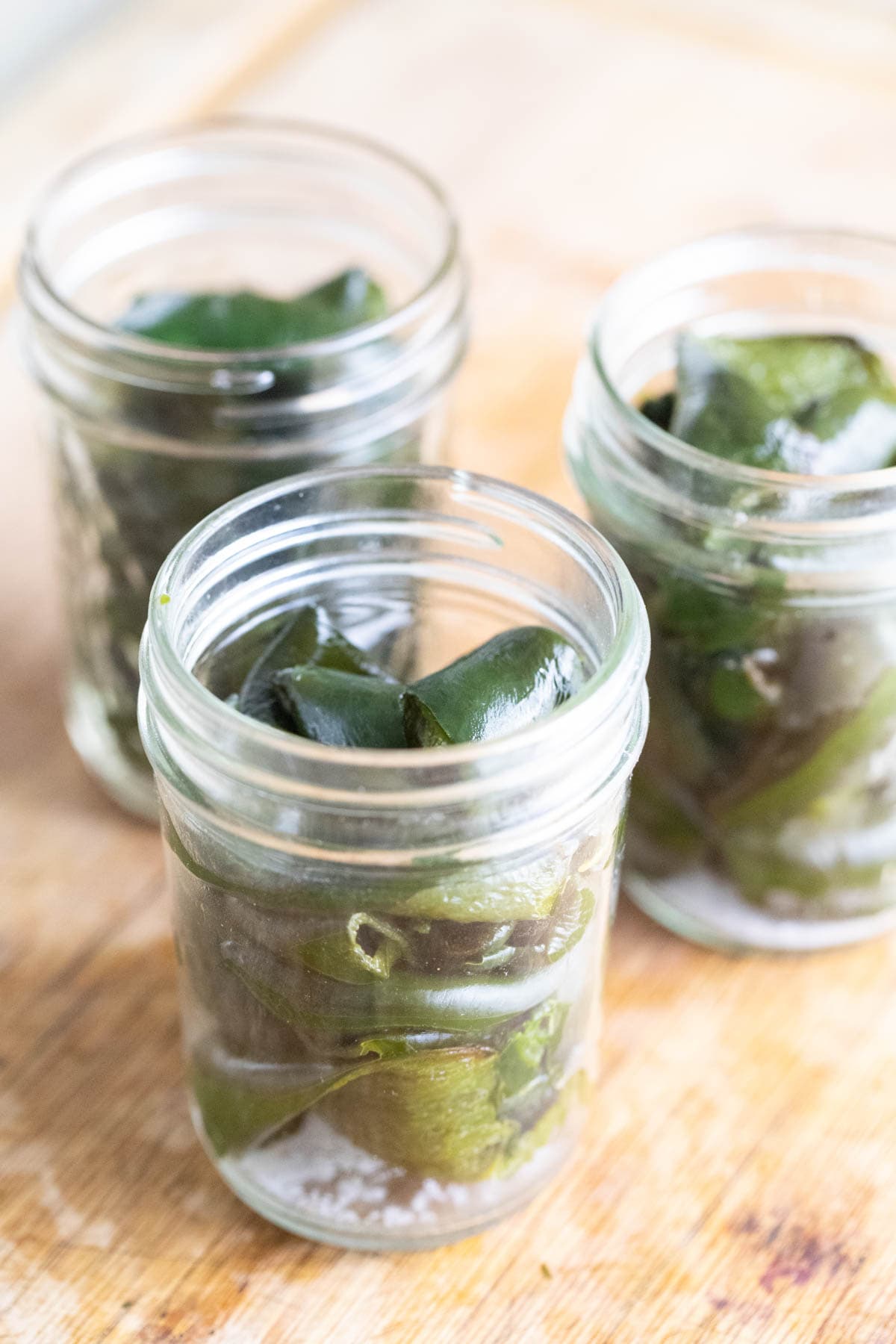
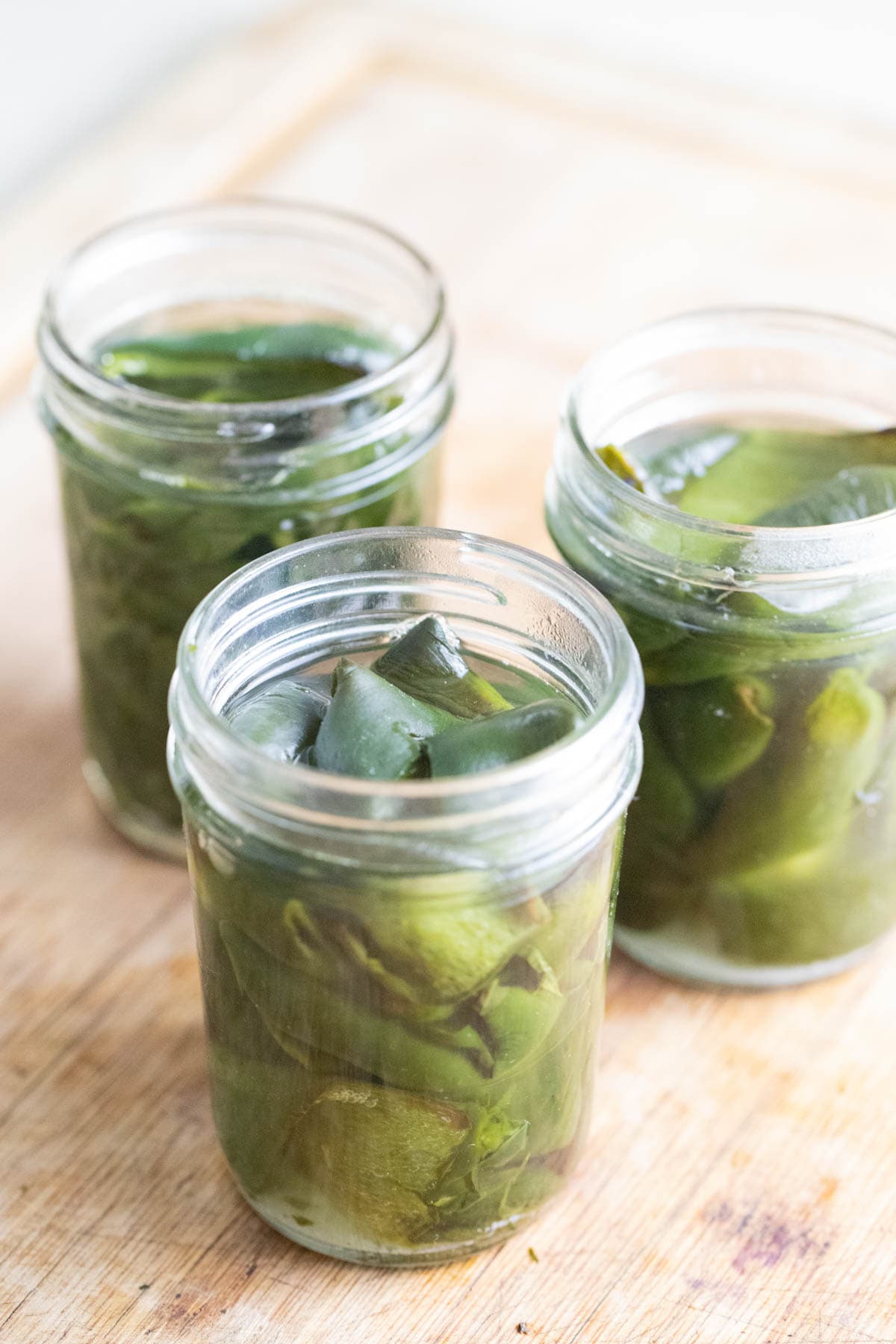
Step three – pack the jars. Add salt to each jar and then pack the jar with the peppers. Make sure to not pack the peppers too tight, leave some room for the water, and leave 1/2 – 1 inch of headspace. Next, add the boiling water (and vinegar if you choose to use it). Again, make sure to leave about 1/2 – 1 inch of headspace. It’s ok if the water doesn’t completely cover the peppers. Use the bubble remover to scrape the inside of the jar and remove any air bubbles. Then, use a damp paper towel to clean the rim of the jar before centering the lid and closing the jar with the band.
Step four – process the jars in the pressure canner. Once the water in the canner reaches 140 degrees F, place the jars in the canner on the rack. Close the lid and make sure that the weight is off the vent. The temperature in the canner will rise slowly, watch the vent, once it starts venting steam set the timer for ten minutes.
After venting steam for ten minutes, place the weight on the vent and watch the dial gauge. We want to process the peppers on 11 psi for 35 minutes of both half-pint and pint jars (adjust the stovetop heat to keep the pressure). If you are using a weighted gauge canner, use your 10 pounds weight and process for the same amount of time. Make sure to adjust processing time according to the table below if you live over 1,000 feet in elevation.
Once processing time is over, turn the heat off but do not try to open the canner. Let it cool to room temperature slowly, this might take a couple of hours. Once the canner is cool, open the lid and let the jars rest in the hot water for an additional 10 minutes before you remove them. Place the jars on a towel on the counter to cool completely before storing them.
How to Store Canned Poblano Peppers…
Canned poblano peppers can be stored at room temperature for up to 18 months. Once the jars are completely cool, check that they are all sealed by pressing on the center of each lid. If there is no movement there, it means that the jar has been sealed. If you find that you have a jar that didn’t seal, you can store it in the fridge and use it first.
Wipe the jars and remove the bands before storing them in the pantry or a kitchen cabinet. I remove the bands because they sometimes rust over time and make it hard to open the jars. It’s also easier to monitor what’s happening inside the jars without the bands in the way and you can reuse the bands when canning something else.
How to Serve Canned Poblano Peppers…
Canned roasted poblano peppers can be served the same way as roasted poblano peppers that just came out of the oven. It’s just that they are there on the shelf ready to go at any time…
- Add them in salads – make a Southwest salad, add poblanos to egg salad or tuna salad, or use roasted poblanos in a salad dressing.
- In a sandwich – I love making a sandwich with a simple whole wheat bread, mayo, summer sausage, a tomato from the garden and roasted poblano peppers. It’s a great breakfast, lunch, or dinner in my book. Also, roasted poblanos are great in a pulled meat wrap, a BBQ sandwich, added right on top of your hamburger, or pretty much any other kind of sandwich, vegetarian too, of course!
- Roasted poblano dip – check out this mouth watering recipe!
- Soups, chili, stews, chowders – roasted poblanos add an amazing smoky flavor to any soup, chili, stew, or chowder. You don’t really need a recipe here, simply chop them and add them pretty much anywhere. They can also be diced and used as garnish.
- Hummus – check out this recipe.
Frequently Asked Questions…
No, you don’t. This will happen during the processing in the pressure canner.
Many times, during pressure canning, we lose liquid in the jars. As long as the jar is sealed you are fine. The food will stay perfectly preserved in there.
No, if you add a little bit of vinegar to each jar for flavoring it’s still not enough acidity to safely process the peppers in the water bath canner, you’ll still have to use the pressure canner. If you don’t have a pressure canner or don’t want to use it for some reason, you can follow the instructions in my canning hot peppers post to preserve peppers using the water bath canner.
Yes! I follow the same exact process when canning roasted red peppers and you can use the same exact process with other peppers as well.
Yes, you can add a couple of garlic cloves or mustard seeds, peppercorns, chili flakes, thyme, rosemary, or whatever else you can think of.
Roasted poblanos are a great ingredient to have in the pantry. They can be added to so many dishes and add an amazing peppery and smoky flavor to so many recipes. Canning poblano peppers at home is a great way to preserve them and make sure that they are ready on the shelf to be added to any dish at any time.
More Pepper Recipes…
- Candied Jalapenos
- Fermented Jalapenos
- How to Preserve Peppers in Vinegar and Salt
- How to Make Red Pepper Paste

Canning Poblano Peppers
Step by step instructions to help you can poblano peppers and preserve them for months.
Ingredients
- Poblano peppers (I used 15 medium peppers but use as many as you have)
- Salt (use non-iodized salt like kosher, sea, or canning salt)
- Boiling water (use non-chlorinated water)
- Optional: other seasonings and vinegar (see notes)
Instructions
- Add two inches of water to your pressure canner. Set it on the stovetop, turn the heat to high, and bring the water to about 140 degrees F.
- Wash the jars, lids, and bands well with hot water and soap.
- Add 1/4 teaspoon of salt to each half-pint jar or 1/2 teaspoon of salt to each pint jar, pack the roasted poblano peppers into the jars (don't pack them too tight, leave some room for water) leaving 1/2 - 1 inch of headspace.
If you've never roasted poblano peppers before, follow the instructions in this post. - Top the peppers with boiling water leaving 1/2 - 1 inch of headspace.
- Use the bubble remover to scrape the inside of each jar and remove air bubbles. Use a damp paper towel to clean the rim of each jar before centering the lid and closing the jar with the band.
- Once the water in the canner reached 140 degrees F, add the jars to the canner (place them on the rack), close the canner and make sure that the weight is not on the vent yet.
- Let the canner heat. Once steam starts to escape from the vent, set your timer to ten minutes.
- After ten minutes of venting steam, place the weight on the vent and let the pressure in the canner build to 11 psi if you are using a dial gauge canner. If you are using a weighted gauge canner, use your 10 pounds weight. Process both half-pint and pint jars for 35 minutes. Make sure to adjust according to the table in the notes if you live over 1000 feet in elevation.
- Once processing time is over, turn the heat off but do not try to open the canner, let it cool slowly (this might take a couple of hours).
- When the canner is cool, open the lid and let the jars stay in the hot water for 10 minutes before removing them from the canner. Set the jars on a kitchen towel on the counter to cool overnight.
- Check that the jars have been sealed by pressing on the center of each lid. If there is no movement there it means that the jar is sealed. If you have a jar that didn't seal, store it in the fridge and use it first. Wipe the jars and remove the bands (because they rust over time and make it hard to open the jar) before storing the jars in the pantry. They should last up to 18 months.
Notes
Adjust weight and processing times according to the table below...
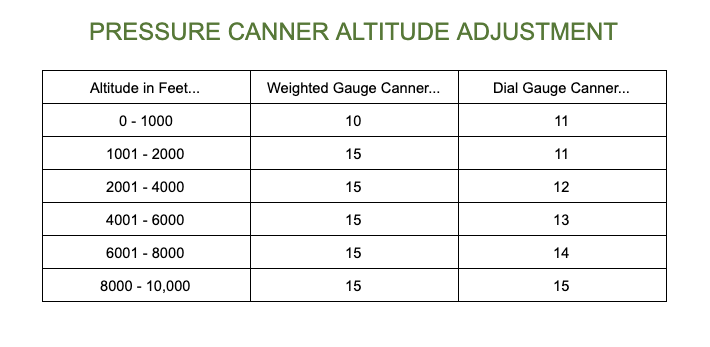
Frequently asker questions...
- Don’t I need to sterilize the jars and lids before canning? No, you don’t. This will happen during the processing in the pressure canner.
- I lost some water in the jars during the processing and now my peppers are sticking out of the liquid, is that ok? Many times, during pressure canning, we lose liquid in the jars. As long as the jar is sealed you are fine. The food will stay perfectly preserved in there.
- Can I add other seasonings to the jars? Yes, you can add a couple of garlic cloves or mustard seeds, peppercorns, chili flakes, thyme, rosemary, or whatever else you can think of.
If you like the taste of vinegar, you can add up to 1 1/2 tablespoons of vinegar to each jar before you add the boiling water. - If I choose to add vinegar, can I process my jars in the water bath canner? No, if you add a little bit of vinegar to each jar for flavoring it’s still not enough acidity to safely process the peppers in the water bath canner, you’ll still have to use the pressure canner. If you don’t have a pressure canner or don’t want to use it for some reason, you can follow the instructions in my canning hot peppers post to preserve peppers using the water bath canner.
- Can I use this process to can other peppers? Yes! I follow the same exact process when canning roasted red peppers and you can use the same exact process with other peppers as well.
Nutrition Information:
Yield: 3 Serving Size: 1Amount Per Serving: Calories: 5Total Fat: 0gSaturated Fat: 0gTrans Fat: 0gUnsaturated Fat: 0gCholesterol: 0mgSodium: 198mgCarbohydrates: 1gFiber: 0gSugar: 1gProtein: 0g

Hi! I’m Lady Lee. I help homesteaders simplify their homesteading journey while still producing a ton of food! I am a single mother of four, I was born in Israel and raised in an agricultural commune called a Kibbutz. Now I homestead in central NC.



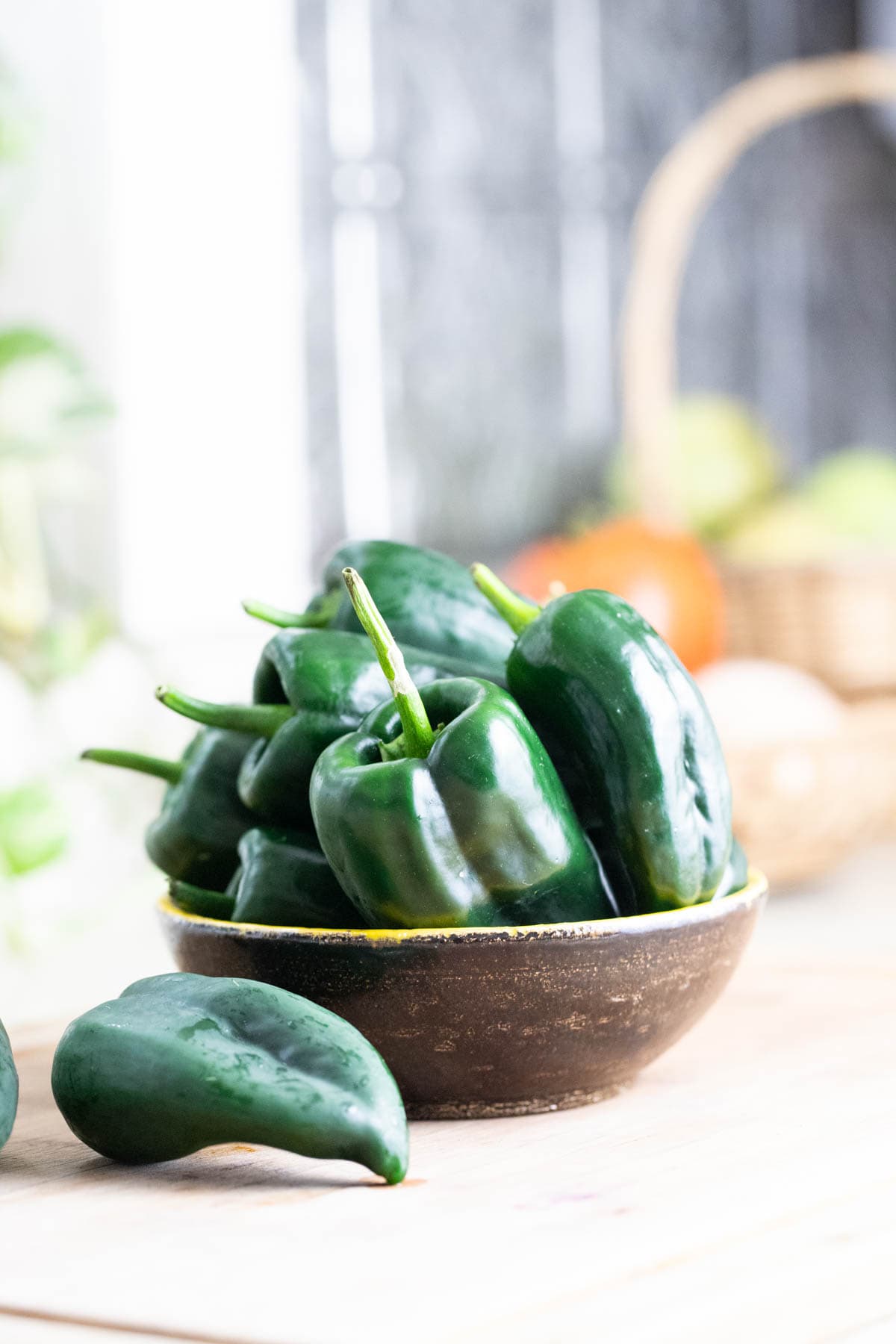
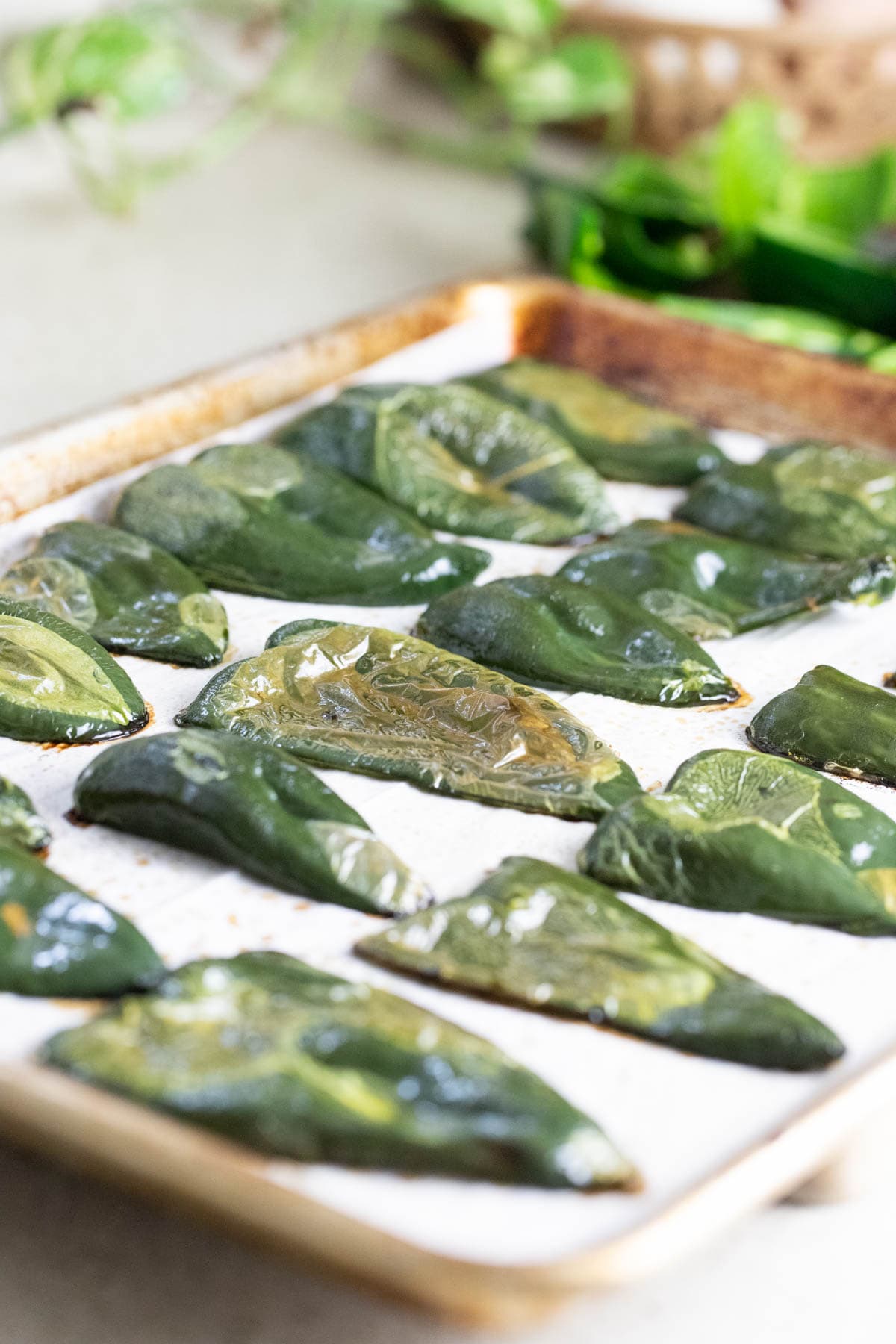
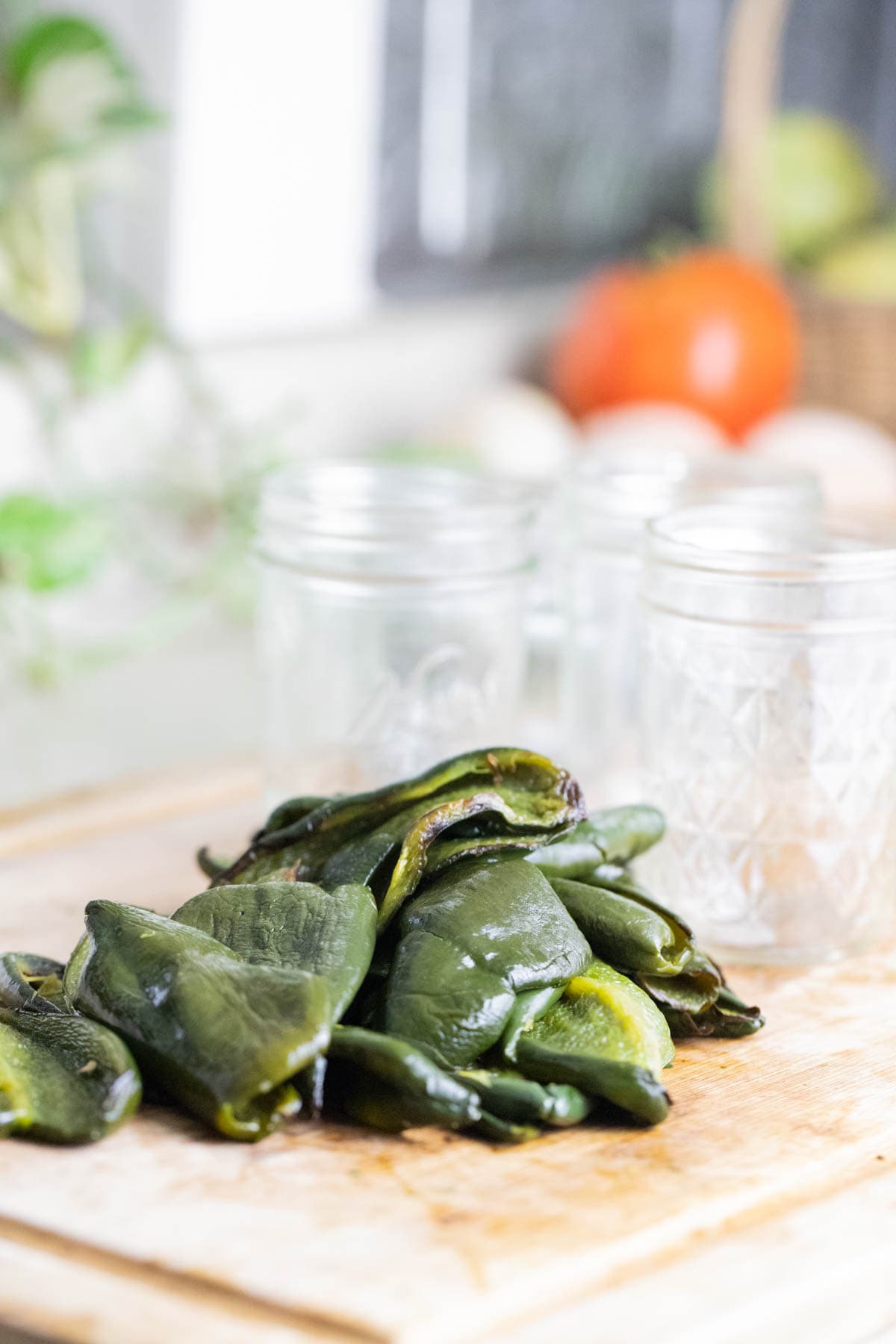
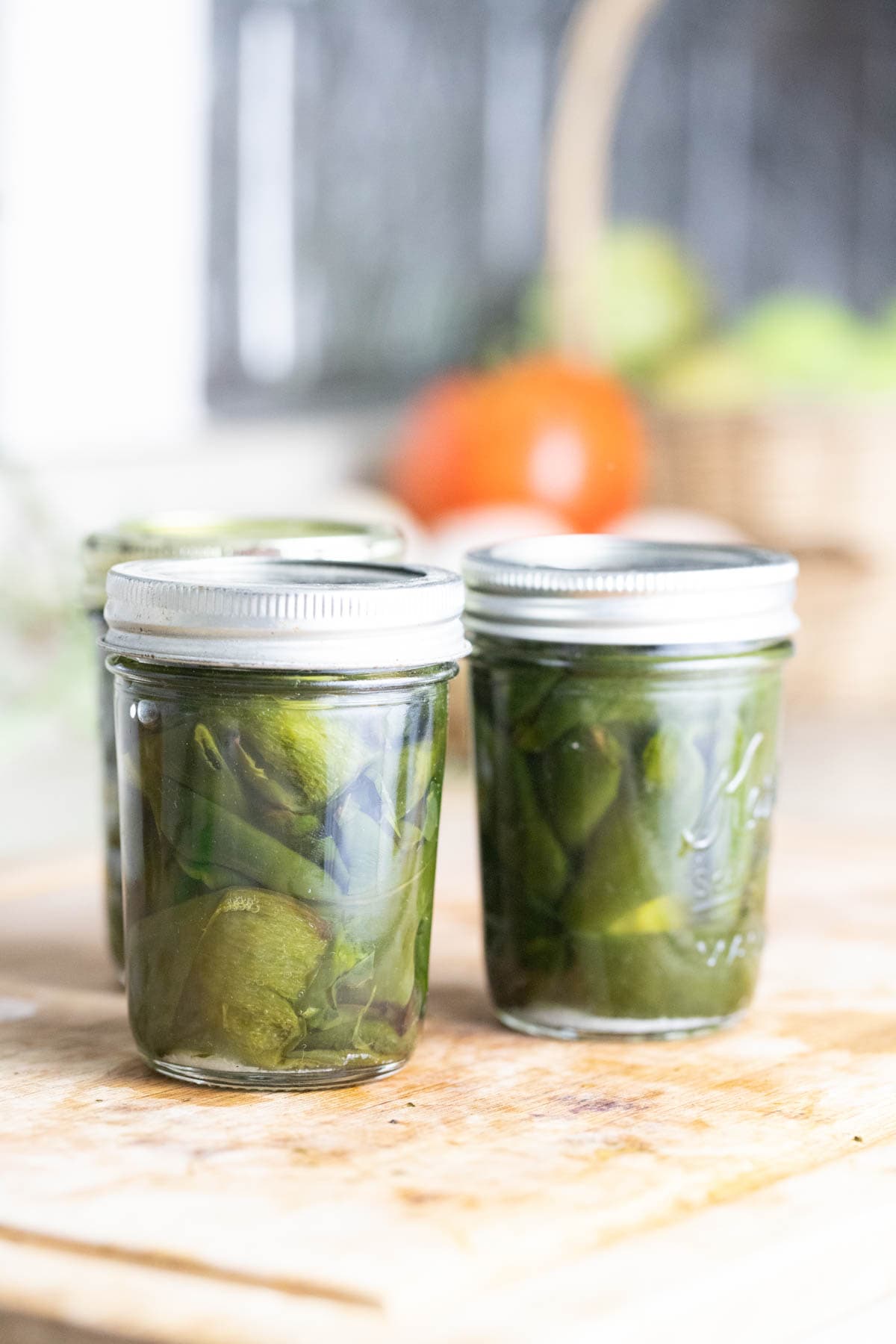
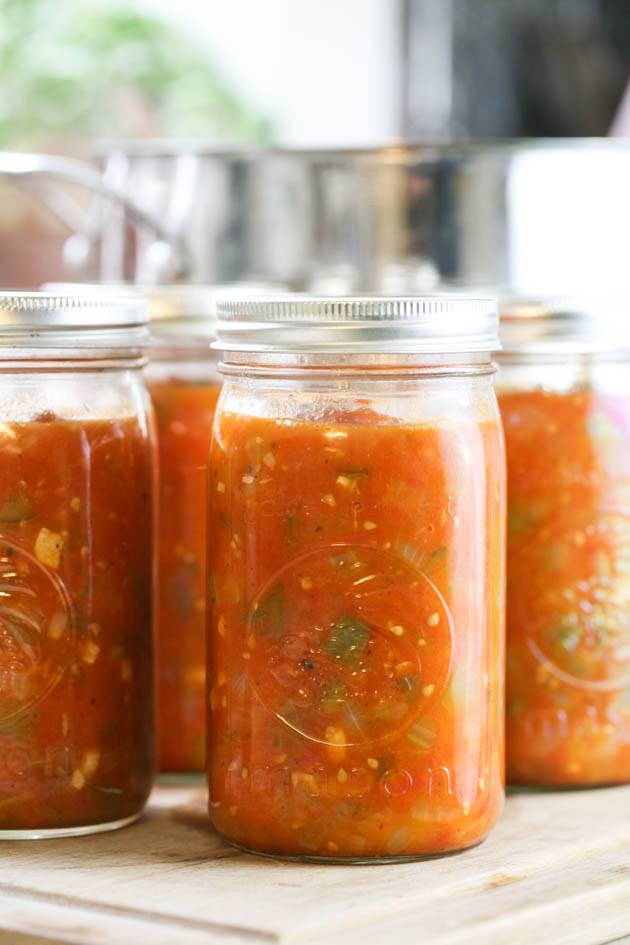
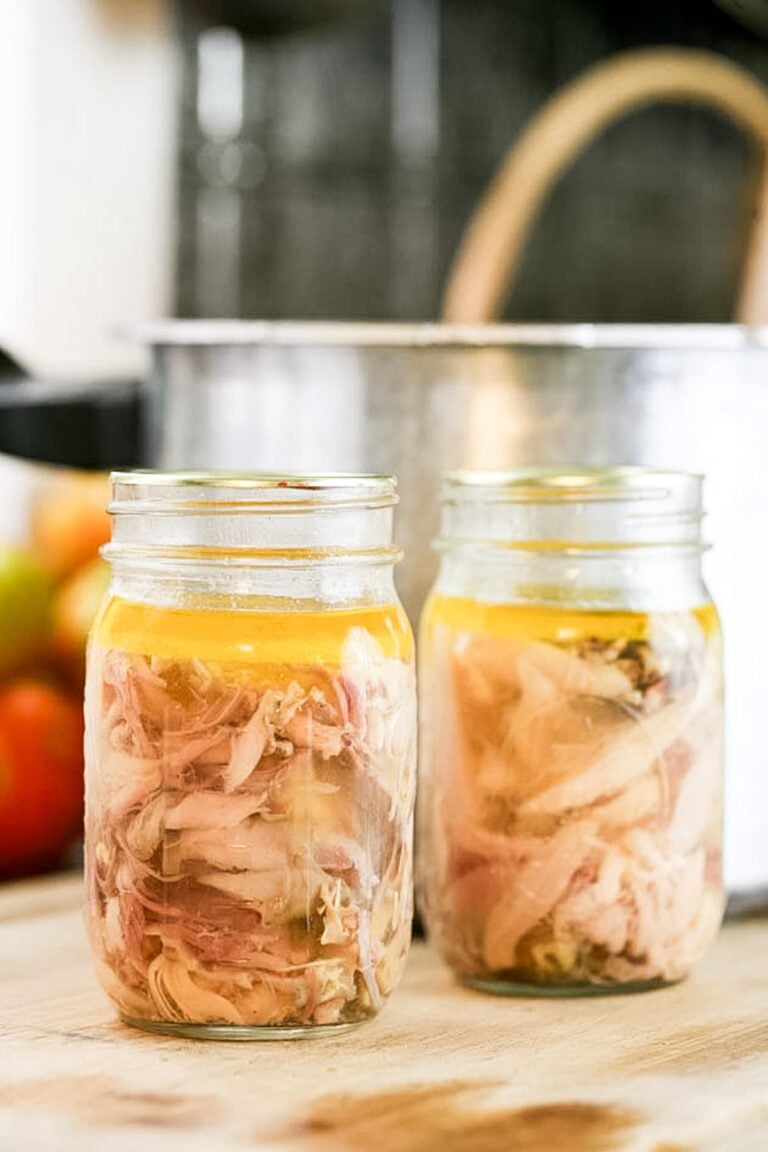
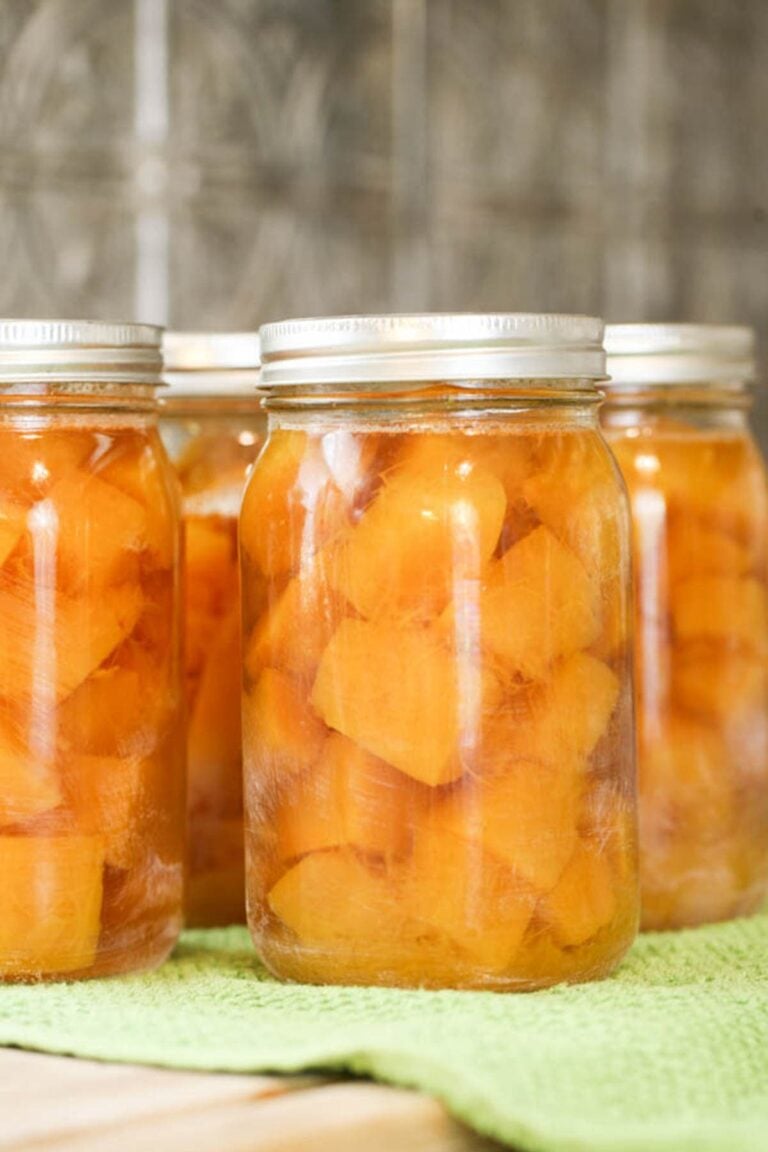
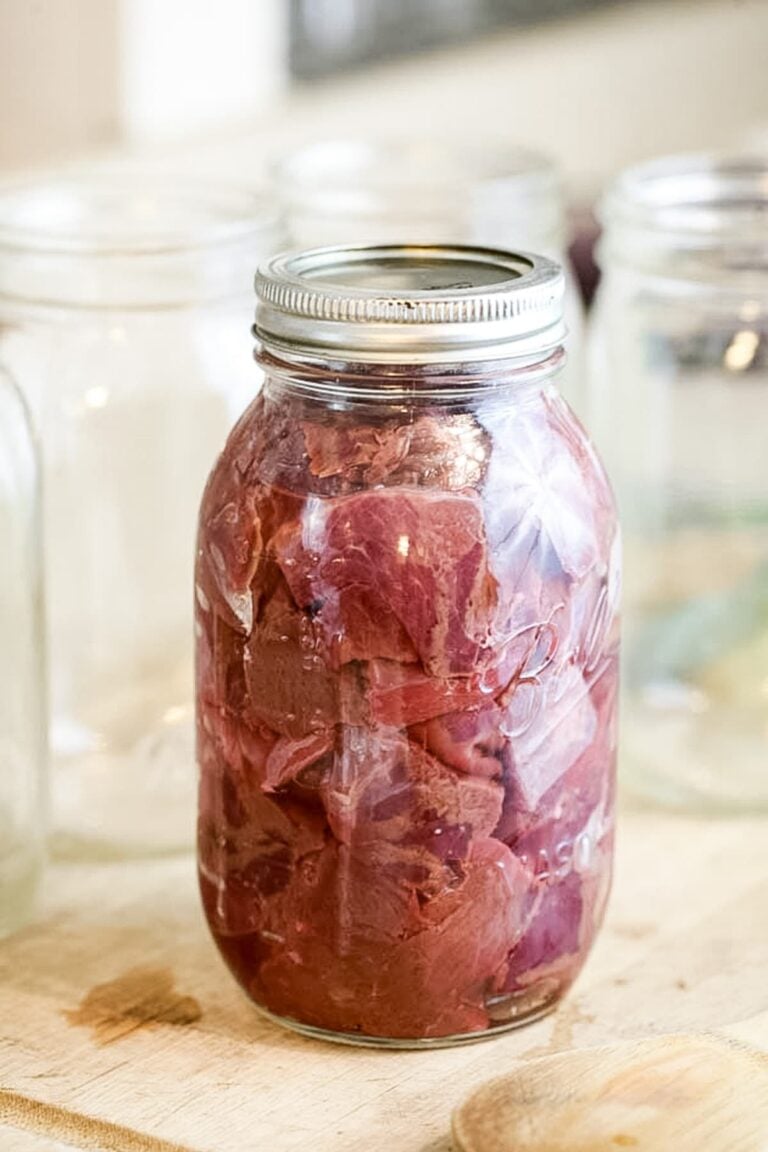
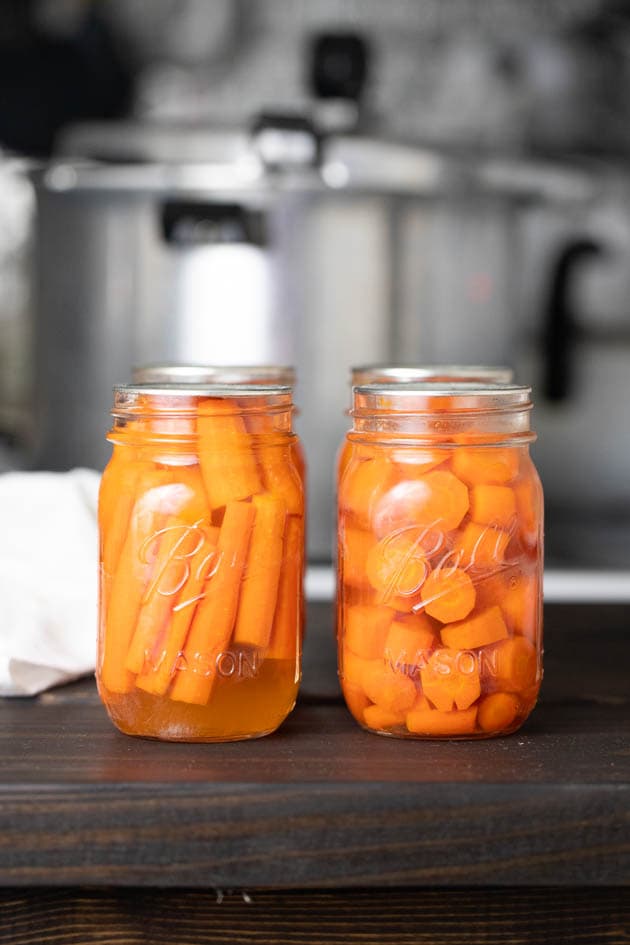
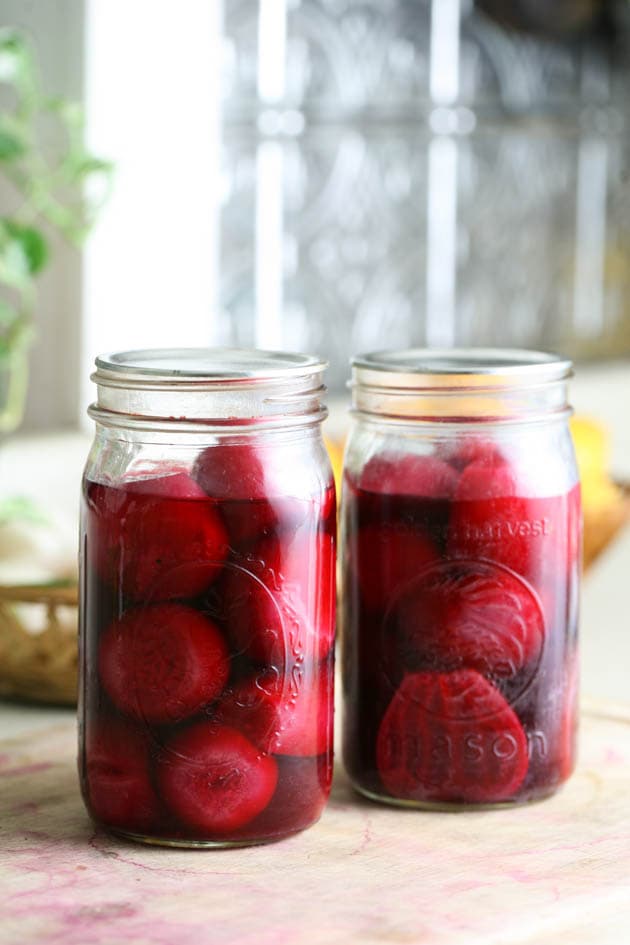
can I roast the peppers and then do the method with the vinegar to do a water bath. I do not have a pressure cooker and I understand you need more vinegar to do a water bath but would that taste weird to have roasted pablano peppers with vinegar. if you do them raw with vinegar are they still good to add to soups or is the vinegar taste throw this off? I have a bunch of pablanos just don’t know if I should freeze them roasted or can them? Any advice would be awesome thanks so much!
When it comes to taste, there aren’t any rules. If you like roasted poblanos in vinegar then that’s that.
As far as canning, if you use a pickling brine you can probably water bath the jars. So maybe, roast the peppers, make a pickling brine (you can boil 3 cups of water, three cups of vinegar, and 1/4 cup of pickling or sea salt), pack the jars with the peppers and spices, add the brine, close the jars and process. If you like the taste, this should be fine as far as keeping at room temperature.
Nice post
can I roast the peppers and then do the method with the vinegar to do a water bath. I do not have a pressure cooker and I understand you need more vinegar to do a water bath but would that taste weird to have roasted pablano peppers with vinegar. if you do them raw with vinegar are they still good to add to soups or is the vinegar taste throw this off? I have a bunch of pablanos just don’t know if I should freeze them roasted or can them? Any advice would be awesome thanks so much!
I visited the kibbutz a long time ago. I remember Banana trees and a pink building there, Hotel California. I am from NC. I have planted poblano seeds from peppers at grocery store and they were prolific…Going to grow some more 2023.. Thank you for the information!
peace,
albert mcentire
I love poblanos! Thanks for stopping by!
I don’t have a pressure canner. Can I use the boiling method with the peppers ? If yes, how long should the filled jars be in the boiling water ?
Thank you !
Peppers are low acid food so it’s important to use a pressure canner. It might be better for you to freeze them instead of can them if you don’t have a pressure canner.
People WB foods all over the world. The US is the only country with an obsession with PC everything.
I have safely WB many items including meat..gasp! , as do large groups of the canning community.
As always, do your own research, because ultimately, it is your kitchen, your rules!
Canning the peppers won’t they be soggy? When i freezes them they are soggy.
I can them after I roast them. They are already soft because of the roasting. They don’t soften anymore though…